This is a country travellers fantasize about – exotic, oriental, ancient India. It is also modern, booming, chaotic India. Between the two lies a wealth of delights – the charm of a golden civilisation still alive and kicking after centuries and to be glimpsed as you turn the corner of a palace or a fort; as you hear the sweetness of the flute in the misty northern hills and the deep rhythm of the sitar at a mesmerizing performance; as you drive past the captivating sound of temple bells that ring out loud amidst the noise of a daily ritual prayer; as you wander into monuments adorned with precious stones – unguarded, still splendid; as you lie deeply relaxed drifting to music, massaged by the strong yet gentle touch of Ayurveda healers.
Destinations
India
This is a country travellers fantasize about – exotic, oriental, ancient India. It is also modern, booming, chaotic India. Between the two lies a wealth of delights – the charm of a golden civilisation still alive and kicking after centuries and to be glimpsed as you turn the corner of a palace or a fort; as you hear the sweetness of the flute in the misty northern hills and the deep rhythm of the sitar at a mesmerizing performance; as you drive past the captivating sound of temple bells that ring out loud amidst the noise of a daily ritual prayer; as you wander into monuments adorned with precious stones – unguarded, still splendid; as you lie deeply relaxed drifting to music, massaged by the strong yet gentle touch of Ayurveda healers.
The wonder that is India never stops overwhelming your senses. It is not a country for the frail and the timid. Unpredictable, noisy, spiritual, peaceful, argumentative, complex, intelligent, emotional – a country that has seen and absorbed many invading and colonising cultures and has grown to a chaotic, vocal, economically booming and fiercely independent democracy that embraces both the poor beggar on the street and the ostentatious luxury brand in the mall. Commercialisation jostles with creativity and an ancient heritage and teachings already include and accept ultra-modern changes and a fast-paced evolution of ideas and inventions.
India offers the magnificence of a varied landscape that spreads itself out from the mystical Himalayas to the warm serenity of the backwaters, from the deep mysterious Sunderbans to the brilliant colours swirling around the deserts of Kutch. Travel here takes you from country-sized bustling cities to forgotten mud-hut villages around rich monuments in locations where empires once existed.
A trip to India is what travel stories are made of. It’s not just the places and the sightseeing that travellers relish, but also the festivals, the art and craft, the people, the cuisines, and of course, the shopping. And we haven’t even talked about the warmth, hospitality and friendliness yet.
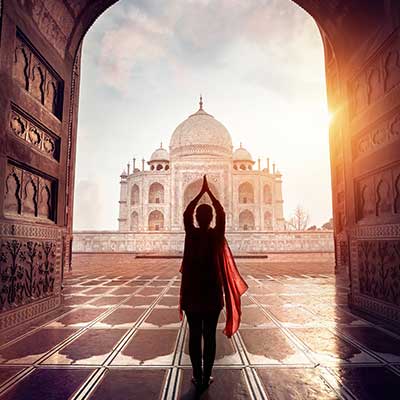
North
North
Opulent in every which way, North India is usually the entry point for a trip to India and has many must-see destinations – it is the India of every traveler’s fantasy. Stretched out at the feet of the towering majesty of the Himalayas, encompassing the high mountain cities at the roof of the world, the verdant flood plains of the river Ganges as well as the arid gold of the western desert, North India presents a vibrant cultural kaleidoscope. From capital Delhi’s rich past and thriving present, from the eternal Taj Mahal to the royal grandeur of Rajasthan, the monumental architecture here is redolent of the creative genius of successive historical era. A large and historically tumultuous region, it has always been a magnetic draw for travelers throughout its history, many of them invaders who brought with them cultures and customs that are still dazzlingly woven into the fabric of Indian life today.
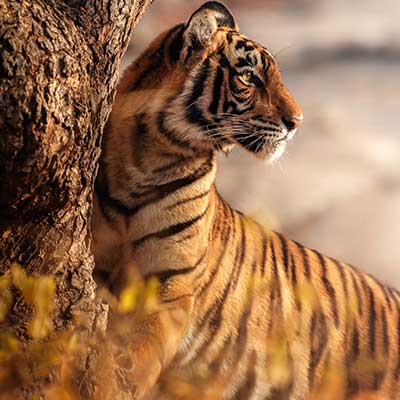
Central
Central
Stretching from beyond the mighty Narmada River to the fringes of the Western Ghats, a transitional zone between the Gangetic lowlands in the north and the high Deccan plateau to the south – the heart of India is endowed with abundant natural beauty, peppered with a dose of medieval Hinduism, dotted with rugged wilderness, and infused with rich tribal arts and culture. The caves spread across Bhimbetka’s vast expanse have paintings that reveal secrets of some of our earliest ancestors. Most of the marauding armies that have swept across the subcontinent over the last two millennia passed through this corridor, leaving conspicuous marks on it. Its array of exceptional attractions ranges from cascading waterfalls, virgin forests, spiritual stupas, timeless temples and hilltop forts to some of India’s best tiger reserves.
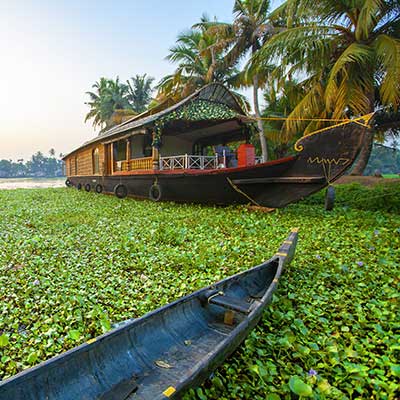
South
South
South India is different in texture, in its taste, sounds, smells and colours. Everything is richer and yet more simple, if you can grasp that essential Indian paradox. It is traditional and seeped in a quiet Dravidian heritage and culture that has remained remarkably unaffected despite a very ancient trade through its splendid seaports, and contact with foreign people and cultures – the Phoenicians, Arabs, Romans and Chinese. You cannot but help appreciate the simple integrity yet extraordinary richness of the region, with its changing landscape of the high Deccan Plateau, the rugged but forested hills and coastal Ghats, the lush green fields of Tamil Nadu and Karnataka, the surreal beauty of the Kerala backwaters, the long stretches of beach stepping out of thick coconut palm and bamboo plantations – serene, gentle and beautiful.
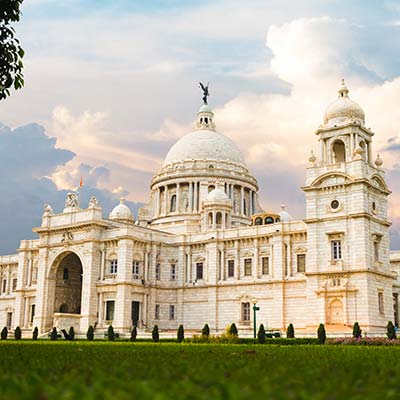
East
East
The East of India is an area of improbable diversity, one of the last frontiers that have much to reward the intrepid traveller, reaching from the Himalayas to the Bay of Bengal, along the wild mangroves and swamps of the Sundarbans. An ancient center of learning, this is where Mahavira and the Buddha preached an alternate, gentler way of life; the Emperor Ashoka looked out onto the futility of death and destruction he had wrought on Kalinga and chose to propagate the way of peace; the British metamorphosed from traders to supreme rulers of India; and the incredibly rich hinterland directed the industrialization of an independent nation. The Nobel laureate, poet, philosopher and artist Rabindra Nath Tagore’s imprint is writ large all over West Bengal. The archipelago of the Andaman & Nichobar Islands known for their unspoiled beach is at the junction of the Bay of Bengal. And in the region even today, the many distinctive tribal people live their lives, their culture alive and well, enduring beyond the flow and flux of changes.
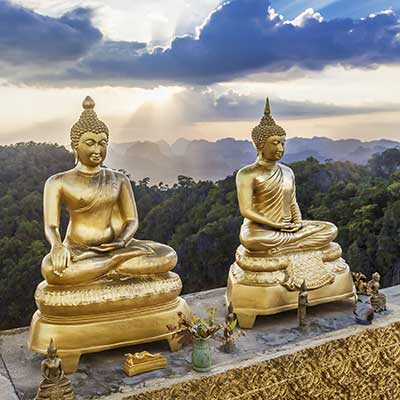
North East
North East
The North East region comprises of nearly 8 per cent of the total geographic area of the country. Obscured from the greater world by ageless forests and formidable mountain ranges, the eight states of North East are natural blessing and anthropological sanctuaries, each with its own unique cultural flavour. Along with its picturesque locations, it has a wide range of rare and endemic species living in its nurturing lap and the region forms a major part of Indo Burma biodiversity hotspot. The infinite variety of its geographic setting, its topography, its varied flora and fauna and avian life, the history of its people and the variety of its ethnic communities and their rich heritage of ancient traditions and lifestyles, festivals and crafts — all make it a holiday wonderland that’s just begging to be discovered afresh.
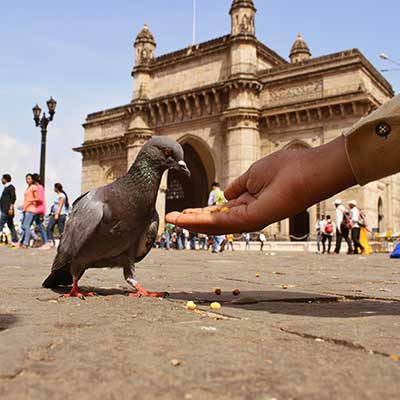
West
West
The west region is bounded by the Arabian Sea to its west and the Gangetic Plains to its east. It is the most heterogeneous of India’s regions, abundant in natural resources; palm fringed beaches, misty forests, desolate salt plains, ancient temples & caves and home to the nomadic tribes. It has within its ambit, the birthplace of Mahatma Gandhi, the genius who gave peace a new potential and it is replete with the heroism and martial acts of Shivaji and other Maratha kings. Commercially it includes some of the most progressive regions defined by multitude of influence apparent in its economic progress. The evidence of trade with central Asia during Harappan times, discovered in Lothal, dates back 3500 years. The rock cut caves at Ajanta and Ellora eloquently record the earliest mingling of faiths. Goa’s golden coastline is magnet for visitors and Mumbai, gateway of India is the financial centre and principal port on the Arabian Sea.
Useful Information
Nepal
Nepal is the land of mountains and monasteries. This landlocked country has the perfect fusion of nature and culture. Picturesque Himalayan range in the North, roaring rivers making their way through the hills to the plains, lush green paddy fields and quaint little villages everywhere, its scenic beauty will leave lasting image on your mind.
Nepal is the land of mountains and monasteries. This landlocked country has the perfect fusion of nature and culture. Picturesque Himalayan range in the North, roaring rivers making their way through the hills to the plains, lush green paddy fields and quaint little villages everywhere, its scenic beauty will leave lasting image on your mind.
Nepal definitely is the ultimate destination for those who prefer to stay closer to nature and immerse themselves in various cultures. From rugged trails to scenic views, from rafting on swollen rivers to sighting wild animals in their natural habitat, it offers a rush of adrenaline for every nature-loving adventure seeker on its diverse array of landscapes. Dotted by medieval city squares, temples and monasteries, the capital city Kathmandu enjoys a rich tapestry of cultures blending to form a national identity. Kathmandu Valley has several UNESCO World Heritage Sites and serves as the country’s cultural metropolis since the unification of Nepal in the 18th Century.
People of Nepal are known for their hospitality, friendliness, and warm nature. Always welcoming to their guests, Nepalese people consider guests as a god, so be ready to be treated with uttermost respect and kindness in every place you travel.
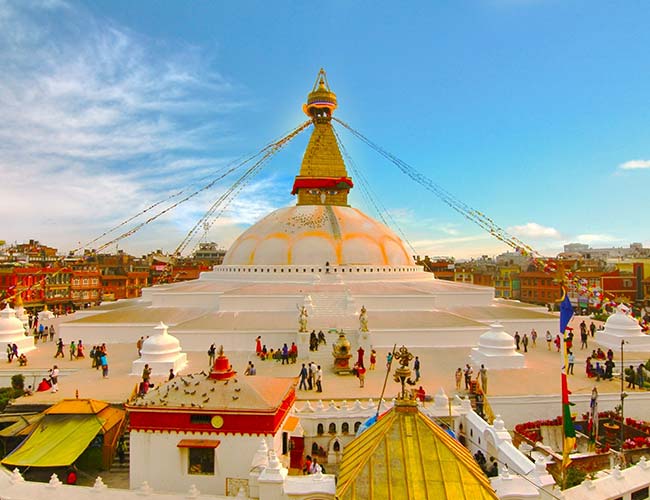
Mid-Hill
Mid-Hill
The Midlands (600m – 3,500m), enjoy a temperate climate and the land here is far more fertile than in the upper Himalayan region. In this region lie the valleys of Kathmandu and Pokhara along with other cultural destinations such as Bandipur, Gorkha Tansen and Nuwakot. A twenty minute drive in any direction from the valley leads to countless viewpoints, traditional villages and hidden temples that are linked by trail-heads make their way from one destination to the other. Kathmandu is the gateway to tourism in Nepal and a short trip to Nagakot or Dhulikhel offers panoramic views of the Himalayas. The Midlands and lower Himalaya form the largest part of the country occupying about 68 percent of total land area.
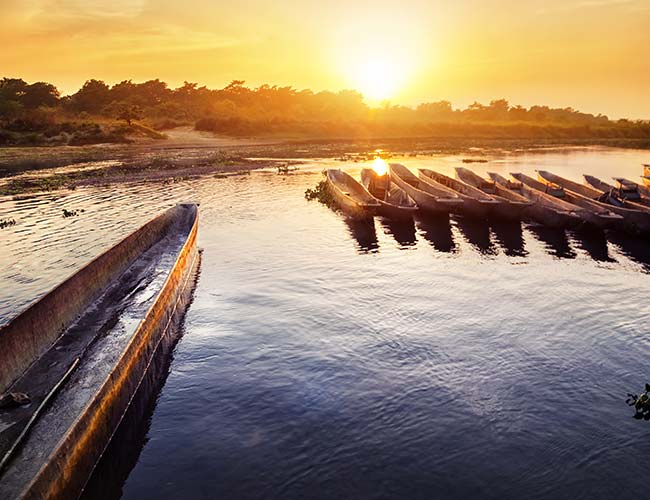
Tarai
Tarai
The plains of Nepal are known as the Tarai (60m – 305m) and further north the Siwalik (700m – 1,500 m) and the Mahabharat range (1,500m – 2,700m) give way to the Duns (valleys). Along this belt lay the Chitwan National Park, Bardia National Park, Shukla Phanta Wildlife Reserve and the Koshi Tappu Wildlife Reserve which harbour an amazing variety of wildlife including endangered species such as the elusive Royal Bengal tiger, the One-horned rhinoceros and Gangetic dolphins along with rare species of birds. The Tarai region occupies about 17 percent of total land area.
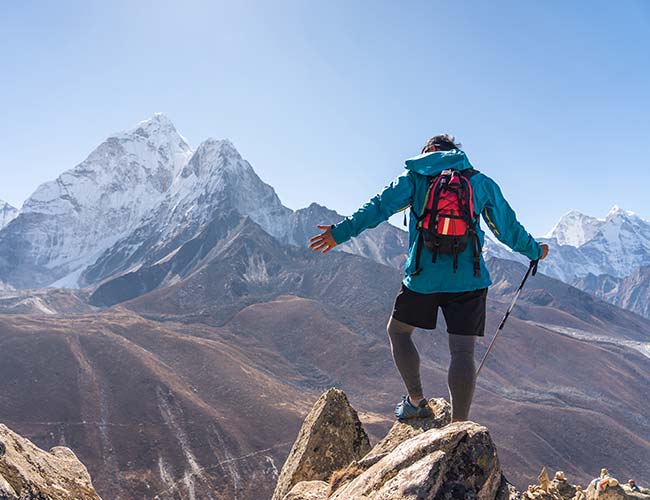
Himalaya
Himalaya
With eight of the world’s highest mountains in the country, Nepal is a mountaineer’s paradise. The Nepal Himalaya is the most formidable mountain range in the world with nearly a third of the country lying above the elevation of 3,500m. Eight of the world’s highest peaks lie within Nepal’s territory: Everest, Kanchenjunga, Lhotse, Makalu, Cho Oyu, Dhaulagiri, Manaslu and Annapurna, which are all over 8,000m above sea level. The Himalaya region occupies about 15 percent of total land area.
Useful Information
Bhutan
Bhutan is a religious heartland with lovely temples, monasteries and forested hills. Every nook and corner is an object of beauty.
As one travels through Bhutan, colours become very prominent. The festivals display colourful textiles. Art and architecture are done in a variety of colours. The fauna and flora are visual feasts. The landscape itself is a paradise of colours. On a larger side, the significance of colours in Bhutan are categorised under three important divisions of the Bhutanese society- Cosmology, Astrology and Buddhist teachings.
The charming mountain kingdom of Bhutan is the only country in the world to measure—and strive to improve-its citizens’ Gross National Happiness.
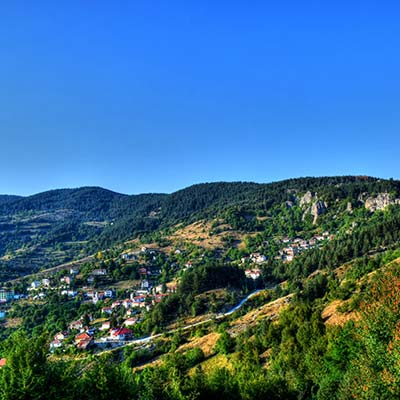
Mongar –
Eastern Bhutan
Mongar – Eastern Bhutan
Mongar is a small town situated atop a hill rather than within a valley. This town is considered the main trade and travel hub of eastern Bhutan. The landscape is spectacular with stark cliffs and deep gorges set amidst dense conifer forests. The region is known for its weavers and textiles, and fabrics produced here are considered some of the best in the country. Mongar, with its population of 3000 people is perfect place to explore on foot. Its main street, clean and wide, is lined with traditionally painted stone buildings with wooden facades and verandas and is very pleasant for an leisurely evening stroll .Mongar is noted for its lemon grass, a plant that can be used to produce an essential oil. It also has a hydro power plant on the Kuri Chhu river. In the past, this region was known as the bastion of the Zhongarps as it produced some of the finest administrators in the country whose descendants still continue to play an active part in the political scene of Bhutan.
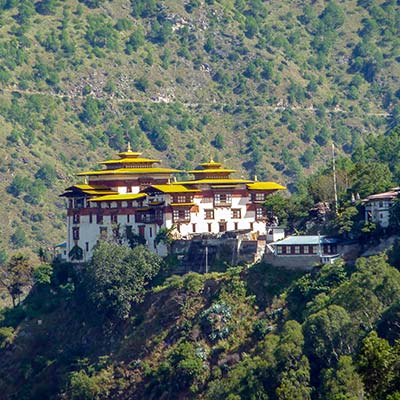
Trashigang –
Eastern Bhutan
Trashigang – Eastern Bhutan
Trashigang, “The Jewel of the East”, spans the easternmost corners of the kingdom, skirting up to the edge of the Indian state of Arunachal Pradesh. It is the country’s largest district, with an altitude ranging from 600 m to over 4000 m. Bhutan’s largest river, Dangme Chhu, flows through this district. Trashigang town is set on a scenic hillside and was once a bustling trade centre for merchants looking to barter their goods in Tibet. Today, it is the junction of the East-West highway with road connections to Samdrup Jongkhar and the Indian state of Assam. Trashigang town is also the principle market place for the semi-nomadic people of Merak and Sakteng, whose unique way of dressing stands out from the ordinary Bhutanese Gho and Kira.
Trashigang is home to the Sakteng Wildlife Sanctuary. The Sakteng Wildlife Sanctuary, one of ten protected areas of Bhutan, was created in part to protect the migoi, a type of yeti, in whose existence most Bhutanese believe. The sanctuary covers the eastern third of the district (the gewogs of Merak and Sakteng), and is connected via biological corridor to Khaling Wildlife Sanctuary in Samdrup Jongkhar District to the south. The traditional architecture and narrow streets in Trashigang town give a quaint and cosy feel. The entire town can be explored on foot.
Trashigang is a 2 night destination from where a day excursion to Trashiyangste is proposed, another delightful quaint town of Bhutan.
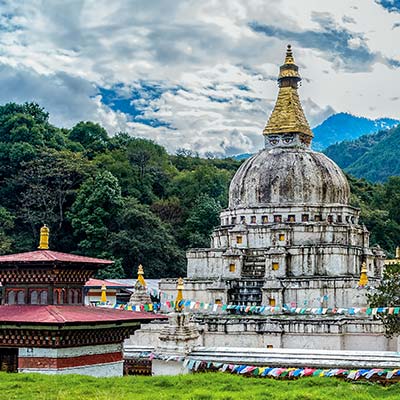
Trashiyangtse –
Eastern Bhutan
Trashiyangtse – Eastern Bhutan
One of the newest ddistricts in the country, Trashi yangtse was established as a distinct district in 1992 and spans 1,437 sq. km of subtropical and alpine forests. With its wealth of natural, historical and cultural resources Trashi yangtse is a destination that visitors to Bhutan will never forget.
Trashiyangtse is an ethnically and culturally diverse district.The people of the region have developed incredible skill at woodworking and paper making. The items they produce such as traditional wooden bowls are prized throughout the country. It contains a major art school, the School of Traditional Arts, which is a sister school of the School of Traditional Arts in Thimphu and teaches six forms of art; painting, pottery, wood sculpture, wood-turning, lacquer-work and embroidery.
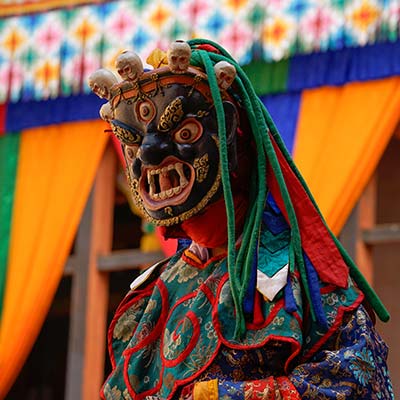
Bumthang –
Central Bhutan
Bumthang – Central Bhutan
Bumthang has an individuality that charms its visitors and separates it from other regions. Comprising of four smaller valleys, Tang, Ura, Choekhor and Chumey, the deeply spiritual region of Bumthang is surrounded in religious legends. These fertile valleys are covered in fields of buckwheat, rice and potatoes. Apple orchards and dairy farms are also common sights here. This serene region is one of the most peaceful and beautiful places in the kingdom.
Bumthang is the religious heartland of the nation and home to some of its oldest Buddhist temples and monasteries. Tales of Guru Padmasambhava and the tertons (“religious treasure-discoverers”) still linger in this sacred region.
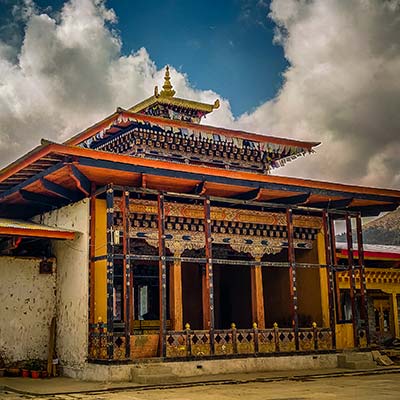
Gangtey –
Western Bhutan
Gangtey – Western Bhutan
The valley of Gangtey is one of the most beautiful spots in Bhutan. This wide and flat valley without any trees is a surprise to find after a difficult climb through dense forests and a rare experience in Bhutan, where most of the valleys are tightly enclosed.
At an elevation of 3,000 metres on the western slopes of the Black Mountains, it is one of Bhutan’s few glacial valleys. A designated conservation area, it is the winter home of the endangered black-necked crane. The residents of the valley have garnered much acclaim for their conservation efforts to preserve the habitat of these beautiful birds.
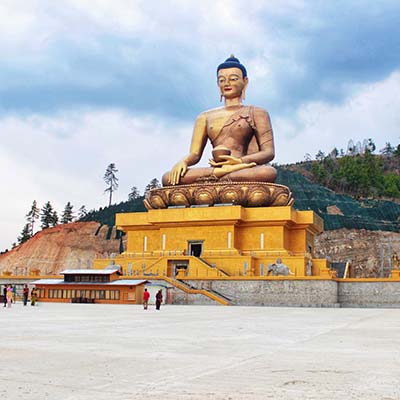
Thimpu –
Western Bhutan
Thimphu – Western Bhutan
The Kingdom’s capital city is home to approximately 100,000 inhabitants including the Royal family. This bustling little city is the main center of commerce, religion and government in the country. Thimphu is the most modern city in Bhutan with an abundance of restaurants, internet cafes, nightclubs and shopping centers, however, it still retains its cultural identity and values amidst the signs of modernisation.
Thimphu is one of the few towns in Bhutan that have been equipped with ATM banking facilities and is a good place to stock up on some currency. Thimphu is the only capital city in the world that does not use traffic lights. Instead a few major intersections have policemen standing in elaborately decorated booths, directing traffic with exaggerated hand motions. The juxtaposition of ancient tradition and modernity make Thimphu the ideal location for visitors to break away from their tour itinerary and just immerse themselves in the lifestyle of contemporary Bhutanese.
There are several attractions in Thimphu such as the National Post Office, the Clock Tower Square, the Motithang Takin Preserve, Tango and Chari Monasteries, Buddha Dordenma, National Memorial Chorten, Centenary Farmer’s Market, Semtokha Dzong to name a few. These form the most important tourist attractions in the capital city.
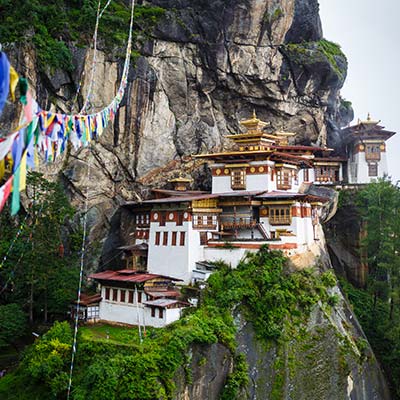
Paro –
Western Bhutan
Paro – Western Bhutan
Paro valley extends from the confluence of the Paro Chhu and the Wang Chhu rivers at Chuzom up to Mt. Jomolhari at the Tibetan border to the North. This picturesque region is one of the widest valleys in the kingdom and is covered in fertile rice fields and has a beautiful, crystalline river meandering down the valley.
One can enjoy nature at its best along with a peaceful environment. However, apart from the main street, which is constructed of traditional wooden structures, the bazaar area comprises of concrete buildings all over the place.
Some of the cultural landmarks of Paro include the Paro Dzong, the national museum, the Takstang Monastery and the Cheri Lang monastery. The Takstang’s Monastery also known Tiger’s Nest hangs on a cliff at 3,120 metres – built on a the location where Guru Rinpoche is believed to have landed on the back of a tiger! To get there, one has to climb up to 3000 meters to the vantage points, then take cliff-hanging steps down to a narrow bridge across the gorge and then ascend a few hundred odd steps to the monastery.
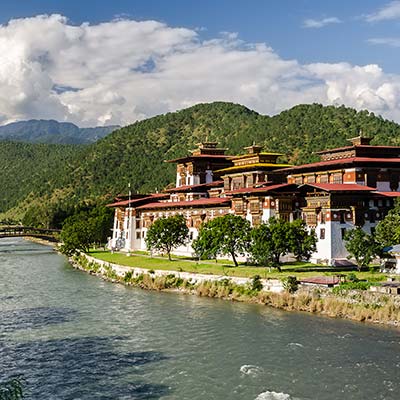
Punakha –
Western Bhutan
Punakha – Western Bhutan
Punakha district is in the east of Bhutan’s capital city, Thimphu. The name has been acquired from the word Pungthan-kha which means ‘the gathering ground’. The Dzong (fortress like building) stands at the confluence of the two rivers that flow through the valley. The structure does look like piles of debris gathered by the rivers. Hence the name’gathering ground’. Officially, the Dzong here is named Punthang Dewachengi Phodrang. The crude translation would mean ‘the blissful castle at the gathering ground’. The Dzong was consecrated in 1637 as the seat of spiritual lpower of Bhutan and it served as the capital until the 1950s. The Monastic Body of Bhutan still considers Punakha as their winter capital and every year they migrate from Thimphu to their winter residence on the 1st day of the 10thBhutanese month. On the way, thousands of devotees wait at different places to receive their blessings. They spend six months in Punakha before moving back to Thimphu on the first day of the fourth Bhutanese month.
It takes two hours to drive to Punakha from Thimphu. Some tourists make day excursions from the capital but most like to spend at least two nights there.
Punakha Valley is almost subtropical. The birdlife is very rich with highlight being the white-bellied heron. This heron is Asia’s largest and endangered. Only few hundreds are left in the world. Many migratory aquatic birds do visit the valley in winter months. Blessed with sub-tropical vegetation, many varieties of insects thrive here. The valley does have reptiles too that includes the King cobra. Of bigger animals there are sightings of the Takin, the National Animal of Bhutan at the northern end of the region. Takins closely resemble the Musk Ox and migrate to lower pastures in winter.
Punakha is also the cultural heartland of western Bhutan. The first King of Bhutan was crowned at the Punakha Dzong in 1907. Henceforth, all crowning ceremonies are held at this Dzong. One of the most fascinating temples in Punakha is the Khamsum Yuelling and it has some exquisite wall frescoes. There are numerous temples, farmhouses and view points where one can go for day hikes.
Useful Information
Sri Lanka
The name Sri Lanka means ‘resplendent land’ and the island nation truly lives up to the epithet. The capital, Colombo is a lively city and serves as the main port of Sri Lanka. It’s an interesting mix of the old and the new, both a commercial hub and a stronghold of the charms of the past. Like a gem hanging off the Indian subcontinent, this brilliant country holds far more than its size would have you believe, enough to have you coming back to it again and again. Breath-taking sands, lush green hills, teeming wildlife, mighty waterfalls, endless heritage and pilgrimage sites, it’s no wonder that Marco Polo described Sri Lanka as “the finest island of its size in the world.”
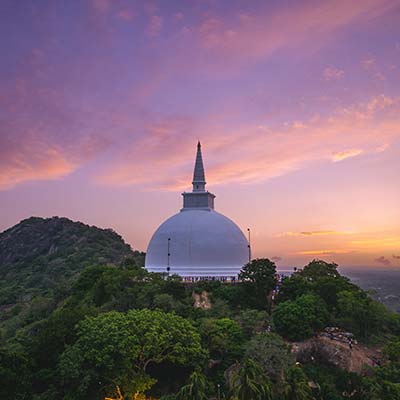
Anuradhapura
Anuradhapura
Anuradhapura is the capital city of North Central Province, and one of the ancient capitals of Sri Lanka, famous for its well-preserved ruins of an ancient Sri Lankan civilization. The city lies 205 km north of the current capital Colombo in Sri Lanka’s North Central Province, on the banks of the historic Malvathu Oya. It is one of the oldest continuously inhabited cities in the world and one of the eight World Heritage Sites of Sri Lanka. It is believed that from the fourth century BC until the beginning of the 11th century AD it was the capital of the Sinhalese. During this period it remained one of the most stable and durable centers of political power and urban life in South Asia. The ancient city, considered sacred to the Buddhist world, is today surrounded by monasteries covering an area of over sixteen square miles.
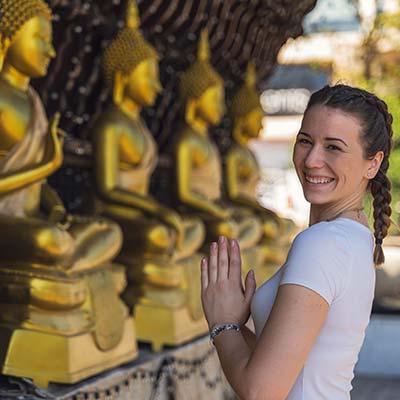
Colombo
Colombo
Colombo, Sri Lanka‘s bustling commercial hub, is located on the country’s west coast and by far the country’s biggest city, as well as the most developed. Its natural harbour at the mouth of the Kelani River was a magnet for successive traders and conquerors – initially the Arab merchants, then Portuguese, Dutch and British imperialists. The city is a jarring mix of old and new, with a central cluster of high-rise office blocks and hotels overshadowing red-tiled colonial-era buildings and sprawling street markets which overflow with high-piled fruit and vegetables, colourful silks and cottons, and deliciously fragrant spices. Symbolic of Sri Lanka‘s multiethnic heritage: graceful Buddhist viharas (temples), for instance, stand close to extravagant temples encrusted with Hindu statuary, along with Muslim mosques with minarets scattered along Colombo’s streets. Colombo is a vibrant city with many restaurants offering global visitors amazing dining experiences and lively nightlife.
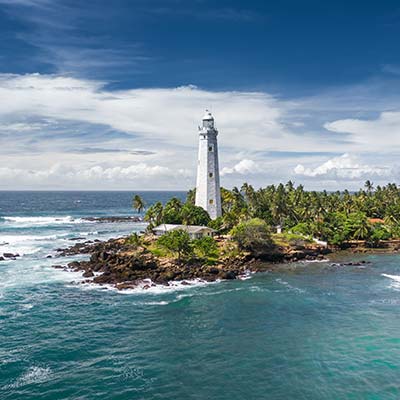
Galle
Galle
The seaside town of Galle is 116 km away from Colombo by road or rail, down the south coast of Sri Lanka. Galle has a rich history dating back to the era where Cinnamon was traded by the Arab traders in the 8th century. Galle flourished in during the 18th century where the Dutch developed the Portuguese established fort into a trading port in South Asia. The diversity of Galle along with its coastlines, the rich interiors and the typical southern lifestyle orbits around the “living fortress” which today is a UNESCO World Heritage site.
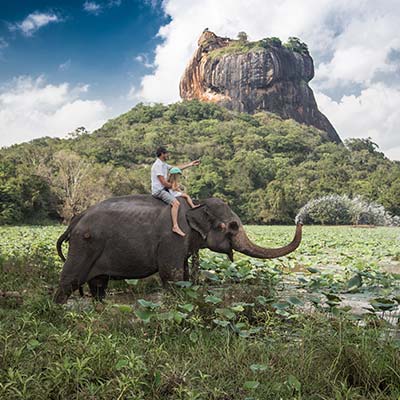
Habarana
Habarana
Habarana is the central point of Sri Lanka’s cultural and historic triangle and the most convenient base for excursions to the Ancient historical cities. Located in the North Central province, 170 km from Colombo, it is connecting ancient capitals of Anuradhapura & Polonnaruwa and Sigiriya/Dambulla on the cultural triangle whilst being en route to Passikuka/Kalkuda and Trincomalee, the famous beaches on the Eastern seaboard. It is the starting point for safaris in the nearby Habarana jungle and the Minneriya sanctuary which is heavily populated by elephants.
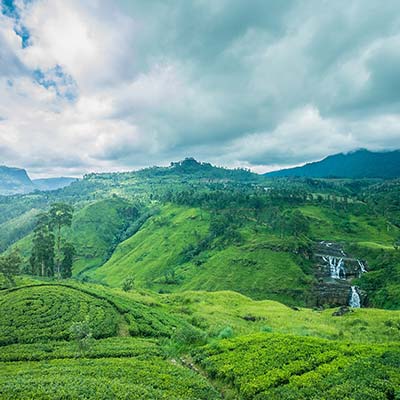
Hatton
Hatton / Dickoya
Hatton is a town in the Nuwara Eliya District of Central Province, governed by the Hatton-Dickoya Urban Council. It is approximately 83 km southeast of Colombo and 44 km south of Kandy and is situated at an elevation of 1,271 m above sea level. Hatton was founded during the British colonial times in order to serve the coffee and latter tea estates. The name of the town refers to the village in Aberdeenshire, Scotland. A number of the surrounding tea estates are also named after Scottish villages. Whilst Hatton serves as a gateway to Adam’s Peak and Sinharaja Forest Reserve, it is better known for its Ceylon tea plantations and industry.
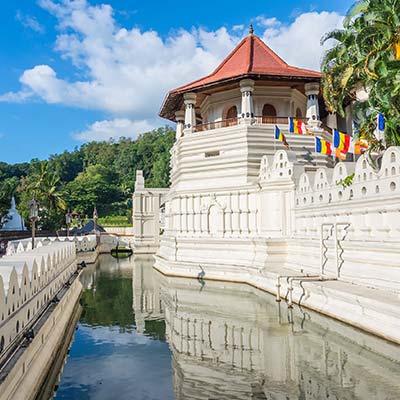
Kandy
Kandy
Kandy is one of the most scenic cities in Sri Lanka and lies in the midst of hills. It is the capital of the Central Province. It is both an administrative and religious city. Kandy is the second largest city in the country and is frequently visited by Buddhists especially of the Theravada School. Kandy is very famous among tourist for three main reasons: It is home to the sacred tooth relic of the Buddha (Temple of the Sacred Tooth Relic; Dalada Maligawa ), The Botanical Gardens (located in Peradeniya) and it always has a special place when it comes to festivities such as the Esala Perahara.
Useful Information
RESOURCES
SITE LINKS
CONTACT US
+ 91 (124) 4563000
Tower B, Delta Square, M.G. Road, Sector 25, Gurgaon - 122001, Haryana, National Capital Region of Delhi, India


